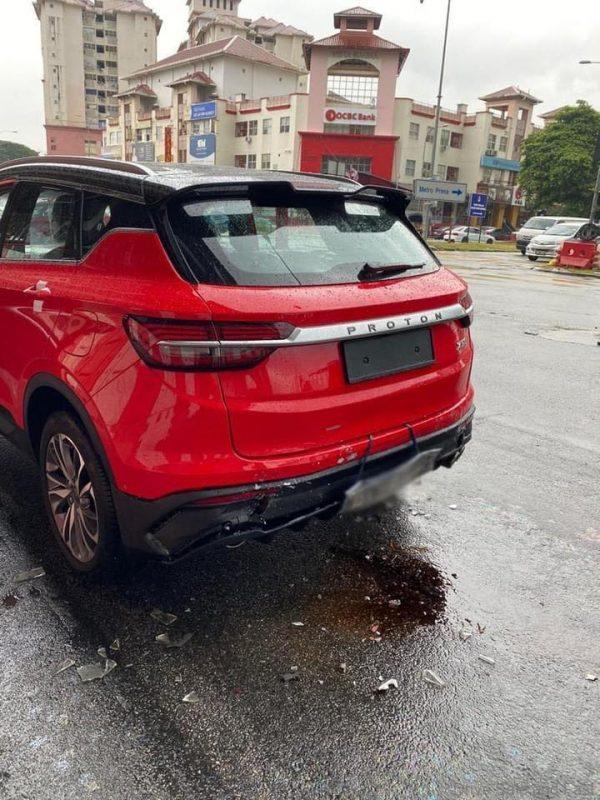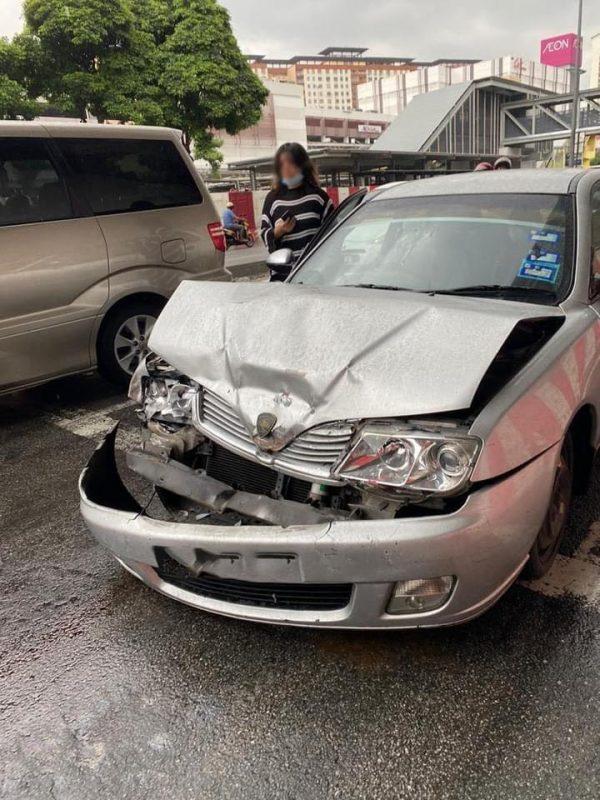A Proton X50 customer test drive unit was rear ended by a random Proton Waja while on public roads in Kepong. What resulted was the Waja showing extensive damage and the X50 escaping with minimal damage to its rear bumper.

The Proton showroom involved, Proton Salient Progress is a 4S dealership located along Jalan Kepong Besar, were quick to take advantage of this. Here’s the text we received along with the photos of the accident:
“Proton showroom test car crash. OUR X50 CRASHED! And survived with only a few bumps & scratches. REAL LIFE proof of how solid the X50 is built and the high level of safety built in. If you want such a car to protect you and your family, look no further and send us a whatsapp to test drive or book one or visit us! X50 belongs to ‘Proton Salient Progress’.”

While we’re very sure the X50 is built to higher safety standards than the Proton Waja, using these sorts of anecdotal incidents to promote a car’s safety standards is a little… off. It’s not something most car manufacturers would condone, but at a dealer level, it’s difficult to control the messaging that gets released to the public. Quick thinking on the part of the dealership staff netted them some “free advertising” on social media, that’s for sure.

In reality, this isn’t the best example to show how safe a car is. Accidents are not a controlled environment and front vs rear collisions deliver very different results as both are designed to react in different ways.
That being said, the X50 is a much safer car than the Waja and this isn’t the first time we’re seeing Waja-related incidents making their rounds on social media this year.
Here are the best NCAP results we could find for both the Waja (sold in the UK as the Impian) and head here for the report on the X50 (tested by ASEAN NCAP).
Proton Impan Euro NCAP 2002 Report
Comments
Proton claims that the Impian is the first of a new generation of cars that are designed to Euro NCAP standards. Its performance in the frontal impact was flawed, however, while the protection it offered to pedestrians also proved inadequate. This was a disappointing performance but Proton says it intends to improve future designs. The car’s body was damaged so badly by the impact that it became unstable. The driver and front passenger risked serious injury. The child restraints performed poorly and it became apparent that, in development, too little thought had been given to their use. The Impian is made only in right-hand drive so in Europe it is sold only in the UK.
Front impact
The body suffered severe damage and both front passengers suffered chest loads that could cause injuries. The restraints needed to cushion their upper bodies better than it did. There were also hard points in fascia that could cause harm if struck. The driver’s footwell was pushed back, posing a risk of leg injury. The centre rear seat had a three-point belt. This gave superior protection to that of a lap belt.
Side impact
The side impact protection worked reasonably well. However the chest loading could lead to an increased chance of injury, whilst the abdomen and pelvis were reasonably protected.
Child occupant
The 18-month-old was in a rear- facing restraint and the 3-year-old in a forward-facing one. Both were as recommended by Proton. Neither protected its occupant’s head in the frontal or side impacts. Warnings of the dangers of death or serious injury for a child placed in a rear-facing restraint in the front passenger’s seat were inadequate. There was a sticker on the passenger’s sun visor, visible in the stowed position, and a pictogram (which, because of its design, could easily confuse) on the passenger’s end of the fascia.
Pedestrian
The pedestrian protection can best be described as dire. Proton admitted to Euro NCAP that its designs weren’t pedestrian friendly, but promised improvements.

